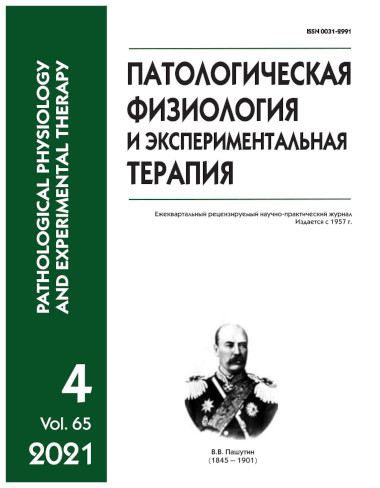Современные аспекты биологического моделирования нарушений полового развития
DOI:
https://doi.org/10.25557/0031-2991.2021.04.128-136Ключевые слова:
преждевременное половое созревание, девочки, экспериментальная модель, крысыАннотация
Введение. Изучение механизмов развития репродуктивных нарушений в условиях эксперимента на крысах является одним из важных направлений современной патофизиологии. Крыса имеет функционирующий эстральный цикл, трехнедельную гестацию и гемохориальный тип плацентации. На циклических изменениях в яичниках и эпителии влагалища крысы базируется биологическое моделирование эндокринной гинекологической патологии. В настоящее время интерес представляет разработка экспериментальной модели нарушения полового созревания в периоде детства. Нарушение полового созревания может приводить к различным патологическим изменениям в сфере репродуктивного здоровья в будущем, актуальность данной проблемы очевидна. Цель работы – изучение современных аспектов моделирования преждевременного полового созревания у девочек. Методика. Анализ современных отечественных и зарубежных работ, касающихся механизмов преждевременного полового созревания и экспериментальных исследований в области моделирования данной патологии в экспериментах на крысах. Результаты. Преждевременное половое созревание у девочек — нарушение, проявляющееся развитием одного или комплекса признаков половой зрелости до 7 летнего возраста. Детерминация полового развития связана с особенностью генетических и эпигенетических факторов. К последним традиционно относят характер питания, стресс как адаптационную реакцию, интегрированную с активацией гормонопоэза. Фактор питания связан с функционированием гормонов жировой ткани, включая лептин, грелин, эффектами инсулиноподобного фактора роста. В ряде экспериментальных исследований, связанных с воздействием факторов питания, стресса и световой дезадаптации на репродуктивную систему животного, доказано значимое влияние последней на нейромедиаторные системы мозга. Наименее изученными в механизме преждевременного полового созревания остаются вопросы нейроэндокринной регуляции гонадной оси системой KISS/KISS1R. Продолжение изучения ассоциации изменения профиля нейромедиаторов моноаминового ряда и динамики кисспептина в эксперименте на крысах способно расширить представление о механизмах половой дифференцировки мозга и транслировать полученные данные в клиническую практику, связанную с обследованием девочек с преждевременным половым созреванием. Заключение. В связи с малой распространенностью и ограниченностью представлений о патогенезе преждевременного полового созревания, данная проблема требует детального изучения. Необходимо дальнейшее изучение патогенетических основ данной патологии в условиях биологического моделирования на самках крыс раннего возраста.Загрузки
Опубликован
2021-12-11
Выпуск
Раздел
Методика
Как цитировать
[1]
2021. Современные аспекты биологического моделирования нарушений полового развития. Патологическая физиология и экспериментальная терапия. 65, 4 (Dec. 2021), 128–136. DOI:https://doi.org/10.25557/0031-2991.2021.04.128-136.













